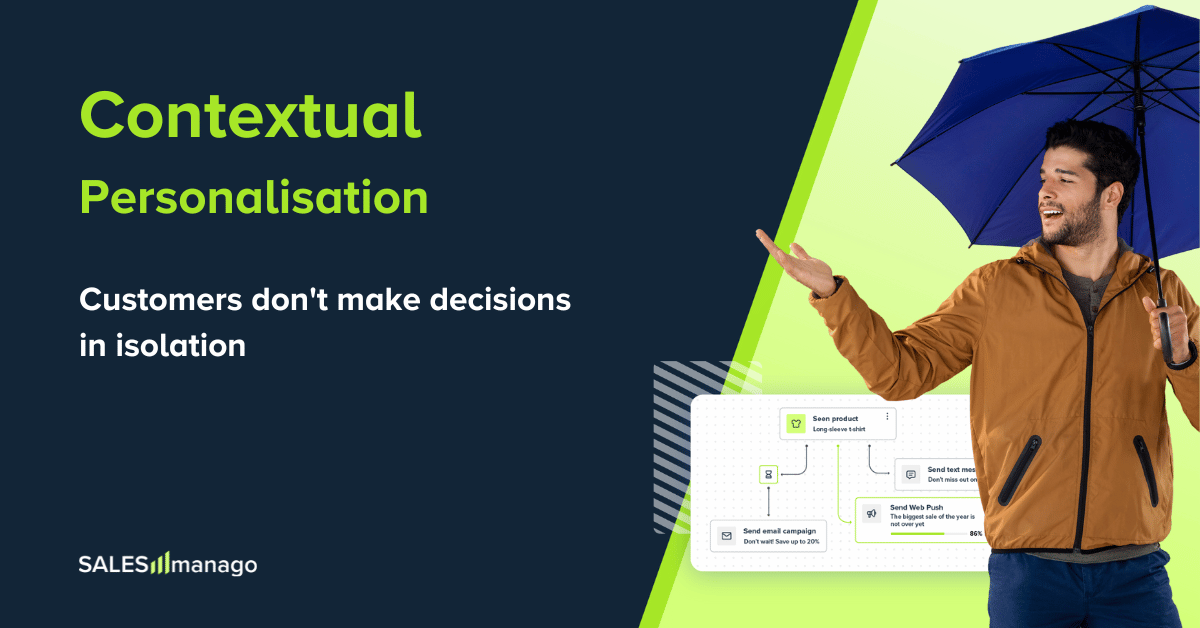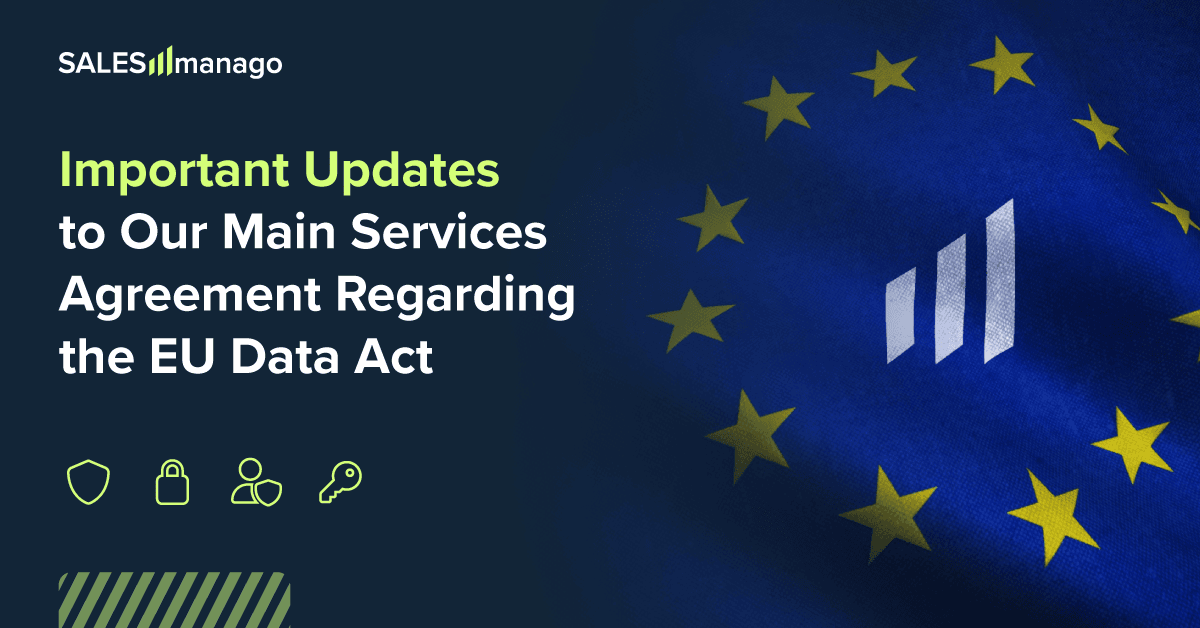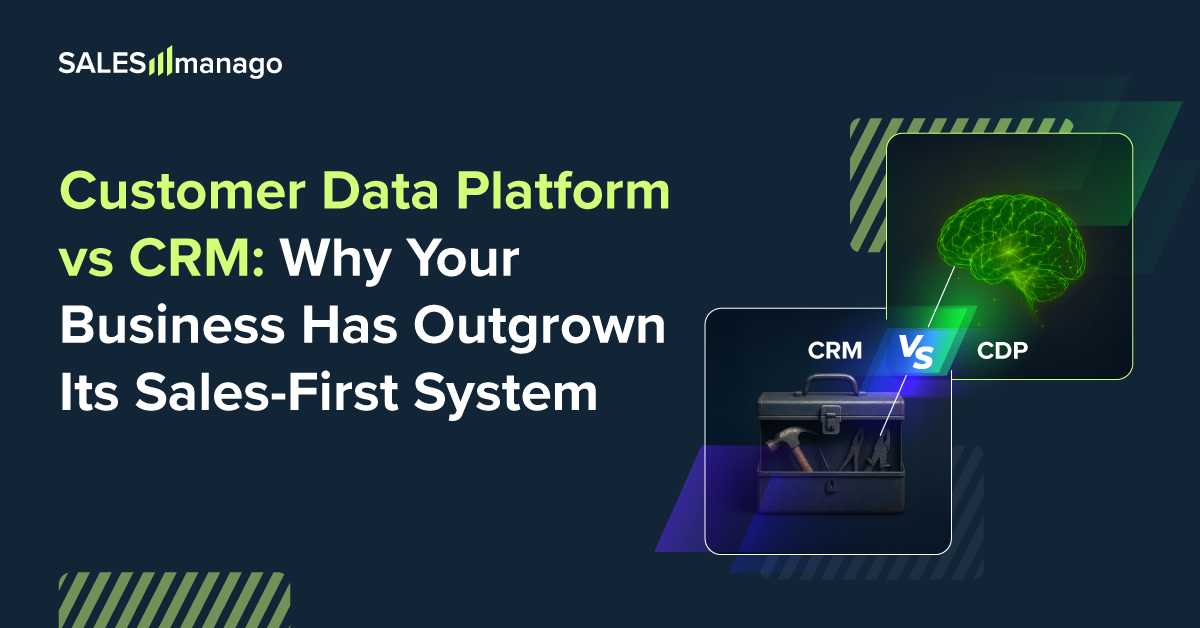
For years, I've observed how personalisation has revolutionised eCommerce, influencing the way brands build relationships with customers. Delivering content and offers that cater to the individual needs of users has become crucial. However, the real game-changer in this field is contextual personalisation – an approach that gives Customer Experience an entirely new dimension.
What is contextual personalisation?
Contextual personalisation goes beyond analysing historical data – it takes into account the user's current behaviour, device, location, and even the time of day. This allows for the delivery of content and offers in real-time, precisely when the customer needs them.
Segmenting based solely on past interactions is no longer sufficient. Today's consumer expects a personalised approach at every stage of the Customer Journey. They might browse offers on their phone while commuting to work, and analyse details on their computer in the evening. Contextual personalisation dynamically adapts content to these shifting needs.
Customers don't make decisions in isolation. Their choices are shaped by their current needs, environment, and the specific moment they find themselves in. These factors create unique experiences that can be decisive in a purchase.
Brands that can adapt to these dynamic changes prove they are part of their customers' everyday lives. Consistency between the offer and momentary needs is key to building Customer Experience at a personal level. It sends a signal: 'You can count on me.'
Context in Practice – How Does It Work?
Contextual personalisation adjusts offers in real-time, taking into account the customer's surroundings and needs at a given moment. In fashion eCommerce, systems can analyse weather conditions – suggesting insulated jackets in winter and lighter models in spring. In the tourism industry, recommendations are based on trends and past bookings, suggesting destinations tailored to the user's current interests.
The same applies to other sectors. In grocery stores, personalisation can suggest recipes and accessories based on products added to the cart or offer promotions depending on the time of day. In electronics, recommendation systems analyse the customer's lifestyle, suggesting lightweight laptops with long battery life to frequent travellers, and tailoring headphone selections to music lovers' preferences.
The cosmetics industry also leverages context, recommending protective creams in winter, UV filters in summer, and additionally suggesting makeup tutorials adapted to the time of day and the user's skin type.
The Advantage Over Classic Personalisation
I've repeatedly seen companies limit themselves to classic personalisation – analysing customers' past purchases and selecting recommendations based on that data. The problem is that this model ignores the user's current needs. Contextual personalisation is a completely different approach – it adapts the offer to the customer's current situation. The fact that someone bought running shoes half a year ago doesn't mean they're not looking for a rainproof jacket for training today.
But how do we find this out? There are several ways:
Product Lifecycle Analysis: A company can predict that a customer who bought running shoes will likely continue this activity for the following months. If, after some time, there's an increase in searches related to running in the rain or the user visits a page with sportswear, the system can suggest a jacket as a natural complement to their gear.
Seasonal and Weather Data: If a customer bought shoes in the spring or summer, the system can consider seasonality and predict that their needs will change in autumn or winter. When forecasts indicate rainy days, the system can send a personalised recommendation for a rain jacket as a logical next purchase.
Customer Behaviour on Site: If a user returns to the sportswear category after a few months but hasn't bought anything yet, the system can detect a purchasing pattern and suggest products tailored to their activity. Even clicking on a blog article about running in difficult conditions can signal that it's time to recommend appropriate clothing.
Similar customer analysis: The system can compare the customer's behaviour with other people with similar shopping habits. If many users who bought running shoes purchased a rainproof jacket after some time, it can be predicted that this customer might need one too.
Interactions in Other Channels: If the customer starts opening emails or ads related to sportswear but hasn't made a purchasing decision yet, the system can dynamically adjust the marketing message, suggesting a jacket at the right moment.

Application in eCommerce
I do not doubt that contextual personalisation is the future of eCommerce. I've seen its potential in various applications:
Dynamic product recommendations – we don't just rely on past purchases, but on what the customer needs now. For example, if a customer is browsing sportswear and simultaneously signing up for a city run through the organiser's website, the system can suggest specialised shoes or compression clothing appropriate for their activity.
Website Content Personalisation – Intelligent adjustments of banners and pop-ups to the user's current context. For instance, if a customer visits the site for the first time, it's worth showing them a general offer, but if they return after a few days after viewing a specific product, the system can adjust the content, highlighting unique features or available promotions.
Improved Email/SMS Campaign Segmentation – messages sent at exactly the right moment, e.g., when the customer has just abandoned their cart or was visiting a page with skin care guides. If they were browsing products for sensitive skin, the campaign can remind them about specialised cosmetics or offer samples of new products.
Smart chatbots and recommendations – more intuitive interactions that take into account the customer's current context. If a customer is searching for eco-friendly products, the chatbot can provide them with additional information about the brand's sustainability policy and direct them to appropriate categories.
A Breakthrough in Offer Optimisation – Dynamic Testing
Although classic A/B tests have their value, their limitation is choosing one variant for all customers, without considering individual differences. Contextual personalisation dynamically adjusts offers in real-time. For example, instead of a single promotion for everyone, the system analyses preferences—customers making small purchases might get free delivery, while those buying in larger quantities may receive a discount. Similarly, product recommendations may vary depending on the device the user is using.
The Future of Context-Driven Customer Experience
All my experience in the industry tells me today, contextual personalisation is a necessity. Customers expect immediate, tailored experiences. Companies must consider not only purchase history but also the entire customer journey and their current needs. The development of AI and machine learning allows for increasingly accurate predictions of behaviour, enabling hyper-personalisation on an unprecedented scale. Brands that follow this approach will gain a competitive advantage and will be at the forefront of companies that leverage Customer Experience as a key element of their business strategy.
Latest posts

Important Updates to Our Main Services Agreement Regarding the EU Data Act
As your trusted partner in growth, we are committed to staying ahead of the regulatory landscape to ensure your business is always compliant and competitive. In line with this commitment, we are proactively updating our Main Services Agreement (MSA) to align with the new EU Data Act.

Customer Data Platform vs CRM: Why Your Business Has Outgrown Its Sales-First System
For decades, the Customer Relationship Management (CRM) system has been the undisputed centre of the customer universe. Born out of the needs of sales teams, it was adopted by marketers because, for a long time, it was the only tool available to manage customer data. The belief that this sales-first system can still act as the central "brain" of a modern ma...

August's Low Tide: Trends' Seabed
August has a unique rhythm, doesn't it? It's the low tide of the business year. The frantic waves of the first half have receded, and for a brief moment, the seabed of our industry is exposed.This quiet period is our chance to walk the sand and see the underlying structures we usually can't: The shifting channels of influence, the new habits etc...
